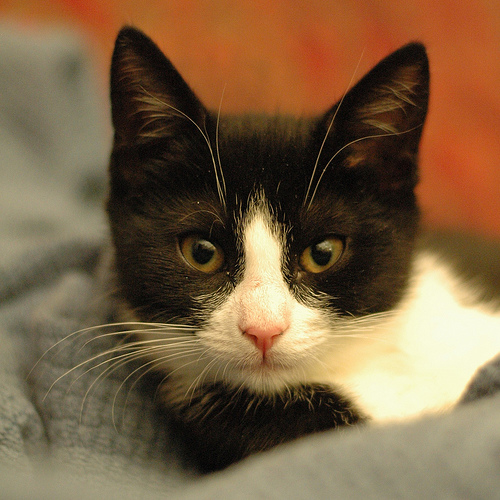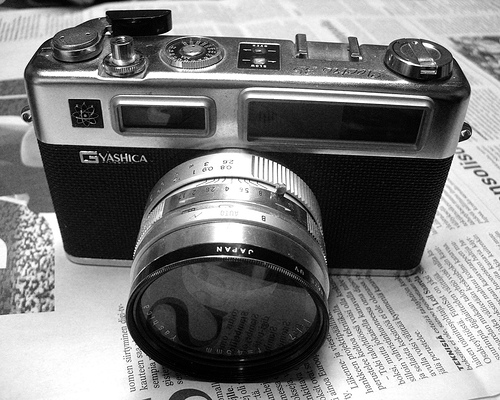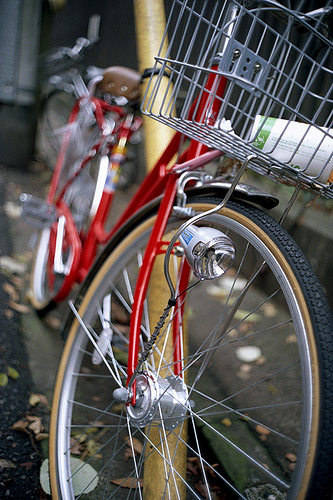I love to take a photograph
When I was a teenager I wanted a “real camera” so so much — I built a pinhole camera from the instructions in a 4-H booklet, and I shot rolls of 110 with it and also a crappy little camera I bought at a department store with money from my library job. What I really wanted was a 35mm camera, though — a Real Camera.
I never got that real camera, although over the years I shot plenty of rolls of 35mm film in various random point-and-shoots. I always found it kind of dissatisfying, though. But five or six years ago I got a digital point-and-shoot and it was wonderful! I took so many pictures, and learned so much, and last year I jumped in with both feet and bought a Nikon D70 and a couple of lenses — in my heart, this was my first Real Camera. I got even more excited about taking photos with my first real camera and this has inspired me to go on with my love for photography. Now, I’ve got more inspiration to preserve them through online photo book makers like PrintedMemories.
This month, though, I’ve made a 180-degree turn. Instead of pursuing fancier and more expensive digital technology, I’m exploring 35mm film rangefinder photography. In 2009!
I’ve been thrilled to discover that there are so many wonderful people, all over the web, still using these cameras. Better yet, they not only post their photos, but belong to super-active communities where they discuss the gory technical details. The didactic generosity I’ve seen already is wonderful — people really take the time to share their knowledge.
I’ve cleaned up my new/old Electro 35 G (it’s got a 45mm f/1.7 Yashinon lens) as well as an Agfa Silette (Apotar 45mm f/3.5 in a Prontor-S shutter). I’m in the middle of shooting my test rolls, and I can’t wait to see the shots!
Turns out I’m not the only person at the Resistor who likes cameras and film — so we’re going to be playing with developing here. Of course, there are groups on Flickr for that, too.
It’s taken over 20 years for me to get back to the idea of shooting 35mm (and soon, 120) film. I’m perfectly happy with how this has turned out, though. If Malcom Gladwell is right, and you really do need 10,000 hours of practice to succeed, then I’ve just been putting in my time, shooting lots of frames and getting more comfortable with my tools.



I have a few old film cameras I’ve just sorta picked up over the years if you want to check em out lemme know.
I think I’ll get in 35mm photography too. I just found my parents’ old Olympus OM-2; I’ll clean it up, buy a couple of rolls, and start shooting.
i love to see people have the same thoughts on photography as i do. i bought a nikon dslr some time ago. but what really thrills me is to develop my shot film or to think a few times what shots you do (every shot costs money and needs work). i bought myself a nikon f50 slr and a holga to shoot 120 film. its fun.
I’ve got a diana and some 120 film if you want to try toy cameras out.
Great idea!
I recently undusted my old 35mm SLR and took some photos with an nice slides film.
It was astounishing how much better colors are, compared to digital cameras. But how do you scan your films? Do you do it your own – and if what hardware are you using. Or do you use a service?
Great stuff, Rose! I think you’re not alone in being drawn back to film through your use of digital cameras.
I love Yashicas specifically and rangefinders more generally. If you or anyone else at Resistor want spare cameras for parts, I have a few extra Electros that have stopped working for one reason or another. I also have Yaschica’s medium-format camera (the Yashica MAT 124), which I highly recommend.
Although I haven’t developed film there yet, I know that ABC No Rio on the LES has developing space at very cheap rates.
Oh, and here’s something you might like: The Impossible Project.
Fun, fun, fun!
Rose,
I’m pro a Resistor darkroom. I’ve worked with black and white before, but would like to learn color processing.
Thee seem to be two distinct paths to follow when it comes to old/odd cameras: toy vs. serious. I’ve followed both with satisfaction. On the serious side you have things like twin-lens reflex cameras that shoot 120 film, the various 35mm SLRs from the 60s-80s, Mamiyas, etc. On the toy side there’s the Holga, Diana, anything that shoots 110, etc.
The question seems to be whether you want ‘art’ or ‘realism’. Cameras like the Yashica Electro 35 (I used to have one and I miss it terribly) take very crisp, realistic photos. Cameras like the Holga (got one of those too) take really terrible pictures that sometimes come out amazing. So I guess the precision of something like the Electro 35 is attractive while the randomness of the Holga is also attractive, but in a different way.
I’m not advocating one approach or the other, just pointing out all the different possibilities. Also the quality of your test Electro 35 shot is amazing – my pictures never came out that sharp.
Jeffrey,
compared to b&w color processing is boring. It’s quite cheap nowadays to get a basic color lab — at least if you only do prints; an enlarger with color head is handy for b&w, too, if you want to use multigrade material, so I’d get that anyway.
The only other additional thing you need is a heater to keep the developer temperature constant. Apart from that color processing is fiddling with color filters to get the right filtering for the material you use and exactly sticking to the process. Exact times, exact temperatures. Not much room for creativity, no playing around with gradation. Stuff like unsharp masking is easier to handle in b&w process.
Manual development of film rolls in color process is almost impossible, you won’t be able to keep the process temperature. Cheap way to solve this is getting an old jobo cpe/cpa.
Watching the picture slowly appear under red light is a thing you’ll only get with b&w. While there are lamps for handling color paper most of the paper you can get nowadays was made for processing in labs using ir goggles, and is not insensitive to that small spectrum of visible light anymore.
I would still consider buying a digital SLR such as the Canon D series and buy an Adapter for it; to use older manual lenses.
It feels like you’re still using a film camera too but its just digital and you’re saving money! + Bump your ISO to 800, which is 200 speed ISO film and you’re set.
Don’t go all film, try digital SLR with manual lenses.
————————————————-
Here are some more links to a great community of manual lens users.
-Nate
http://forum.mflenses.com/manual-lenses-f3.html
http://www.fredmiranda.com/forum/board/55
I have a Minolta 200MM Freedom 90EX camera that I am looking to sell. If anyone is interested, please contact me via email at [email protected] or at 212-885-0374. Thank you.
Ive been reading the site, and just came across this post.
I love old cameras, and went to school for photography for a few years, did black/white as well as color processing (color processing is kind of boring…we had a giant machine that you just put your exposed paper in, then waited 5 min, and it was done….however the results make you so happy!)
Somewhere I have a kit I bought from a camera shop that allows color processing without need for exact temperatures…I havent used it yet, and next time I head back to New Hampshire Ill grab it, maybe some Resistors would like to experiment?
Id love to see some DIY photo projects, Id definitely come along! I also have a 4×5 (speedgraphic) thats fun to play with.
Oh, and also, I do alot of pinholes….fun different types of pinholes, I think Resistors would be interested in reading about anamorphic pinholes (throw into google and flickr) …they shoot a full 360 degrees on one piece of film, cost alot to buy, but are realllly cheap to make!